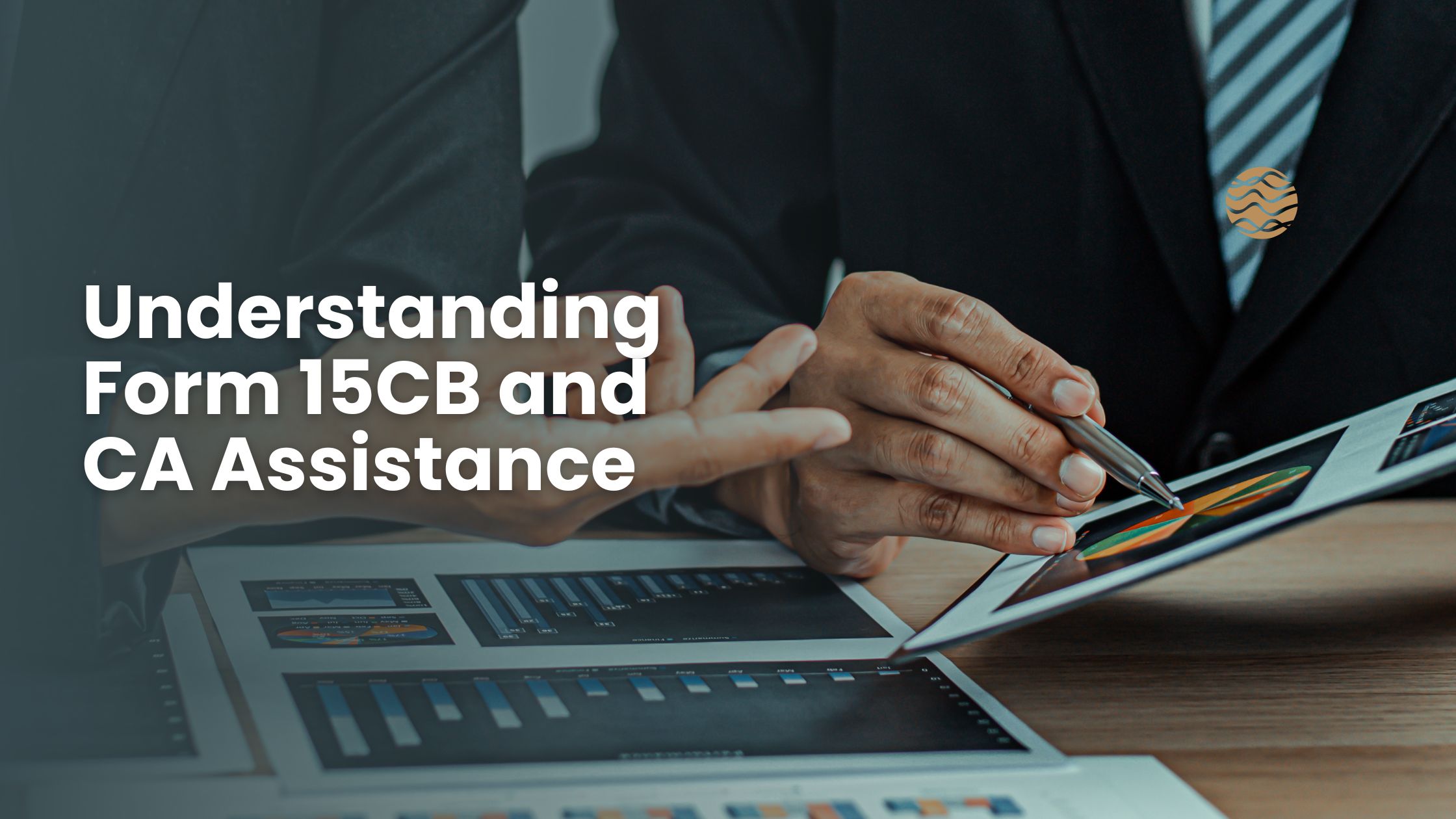What is Form 15CB?
Form 15CB is a certificate issued by a Chartered Accountant (CA) when a person makes payments over ₹5 Lakh in a financial year to a Non-Resident (excluding companies) or a Foreign Company that are subject to income tax, and no certificate under Section 195/197 has been obtained from the Assessing Officer. This form outlines details like the TDS rate, amount deducted, and the nature of the transaction. Essentially, it functions as a Tax Determination Certificate where the CA evaluates the payment’s taxability under the law.
Who Can File Form 15CB?
Only a CA registered on the Income Tax e-Filing portal can access and file Form 15CB. The taxpayer is also required to assign the form to the CA for certification.
Why is Form 15CB Certification Needed?
The certification in Form 15CB enables a CA to analyze the remittance under Sections 5 and 9 of the Income Tax Act, as well as any applicable DTAA provisions, to determine tax implications.
Is Form 15CB Required Before Filing Form 15CA (Part C)?
Yes, uploading Form 15CB is necessary before submitting Part C of Form 15CA. The details in Part C are auto-filled based on the Acknowledgement Number of the validated Form 15CB.
How Can Form 15CB Be Filed?
It can be submitted either online via the e-Filing portal or offline using the statutory forms utility.
Verification and Filing Timeline
Form 15CB needs to be digitally verified using a DSC (Digital Signature Certificate) registered on the e-Filing portal. While no specific deadline is set, it must be submitted before the remittance is processed.
Key Overview of Form 15CB
Form 15CB applies to taxable payments made to Non-Residents or Foreign Companies that exceed ₹5 Lakh in a financial year. It is an event-driven form and must be certified by a CA before each such remittance. Filing can be done online or offline without a fixed timeline.
Requirements to Use Form 15CB
The following prerequisites apply:
- The CA must be registered on the e-Filing portal.
- The CA’s PAN must be valid and active.
- A valid DSC should be available.
- The taxpayer must assign Part C of Form 15CB to the CA.
What Are the Sections in Form 15CB?
Form 15CB consists of six key sections:
- Certification by the CA.
- Details of the remittee (recipient).
- Information about the remittance and banking.
- Taxability assessment under the Income Tax Act (without DTAA).
- Taxability with DTAA relief (if applicable).
- CA’s credentials including name, firm, membership ID, and address.
How to File Form 15CB Online
- Log in to the e-Filing portal with CA credentials.
- Navigate to e-File > Income Tax Forms > File Income Tax Forms.
- Select Form 15CB from the available list.
- Choose ‘Online’, select the financial year, and proceed.
- Enter the taxpayer’s PAN and confirm Aadhaar linkage.
- Fill in the necessary details.
- Preview and verify using DSC.
- Enter the UDIN or choose to update it later.
- Upon successful verification, you will receive a Transaction ID and Acknowledgement Number for future reference.
Final Thoughts
Form 15CB plays a vital role in cross-border payments to Non-Residents or Foreign Companies. It certifies the tax liability of such transactions in line with Indian tax law and DTAA guidelines. Timely and accurate submission ensures hassle-free remittance processing.
How a Chartered Accountant Assists with Form 15CA and 15CB Filing
A Chartered Accountant (CA) plays a key role in maintaining tax compliance when remitting funds to non-residents or foreign entities. They evaluate whether Form 15CA and 15CB are required based on the nature, purpose, and tax liability of the payment.
For Form 15CB, the CA provides a detailed certification that outlines TDS rates, the tax amount deducted, and the purpose of the remittance. This includes assessing the transaction under Sections 5 and 9 of the Income Tax Act, and applying DTAA provisions wherever relevant. This certification is essential for completing Part C of Form 15CA.
While filing Form 15CA, the CA uses the acknowledgment number from Form 15CB to auto-fill necessary fields. They confirm the tax computation is accurate and guide the taxpayer through the online filing steps on the e-Filing portal.
CAs are especially helpful in complex scenarios involving DTAA claims or multiple countries. They also support offline filing through the statutory form utility and handle verification using their registered Digital Signature Certificate (DSC).
Engaging a CA ensures that filings are done correctly and on time, reducing the risk of errors or penalties and simplifying the tax process for international remittances.



